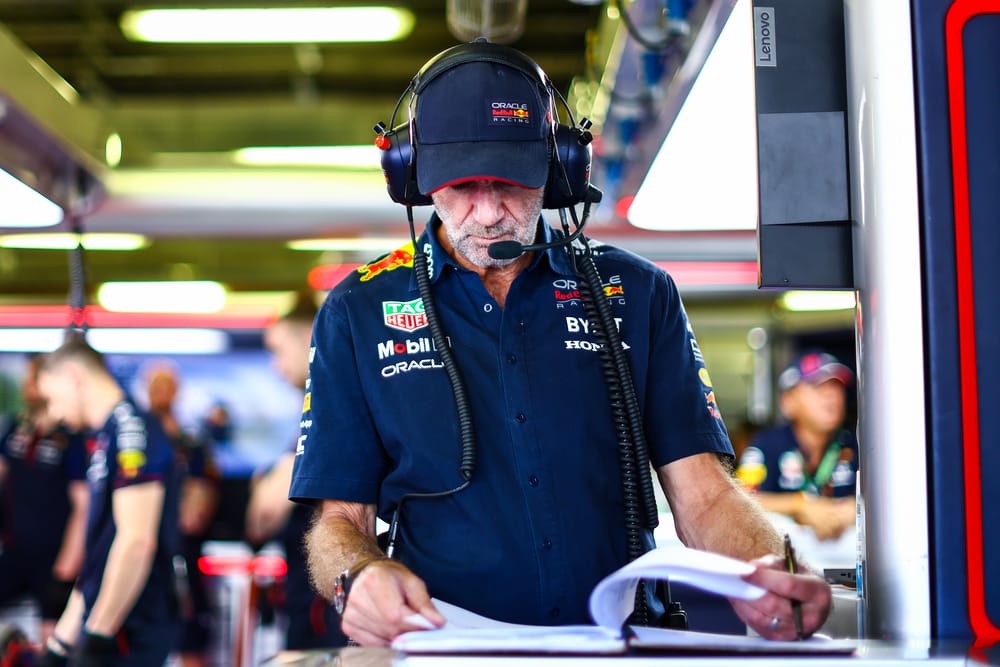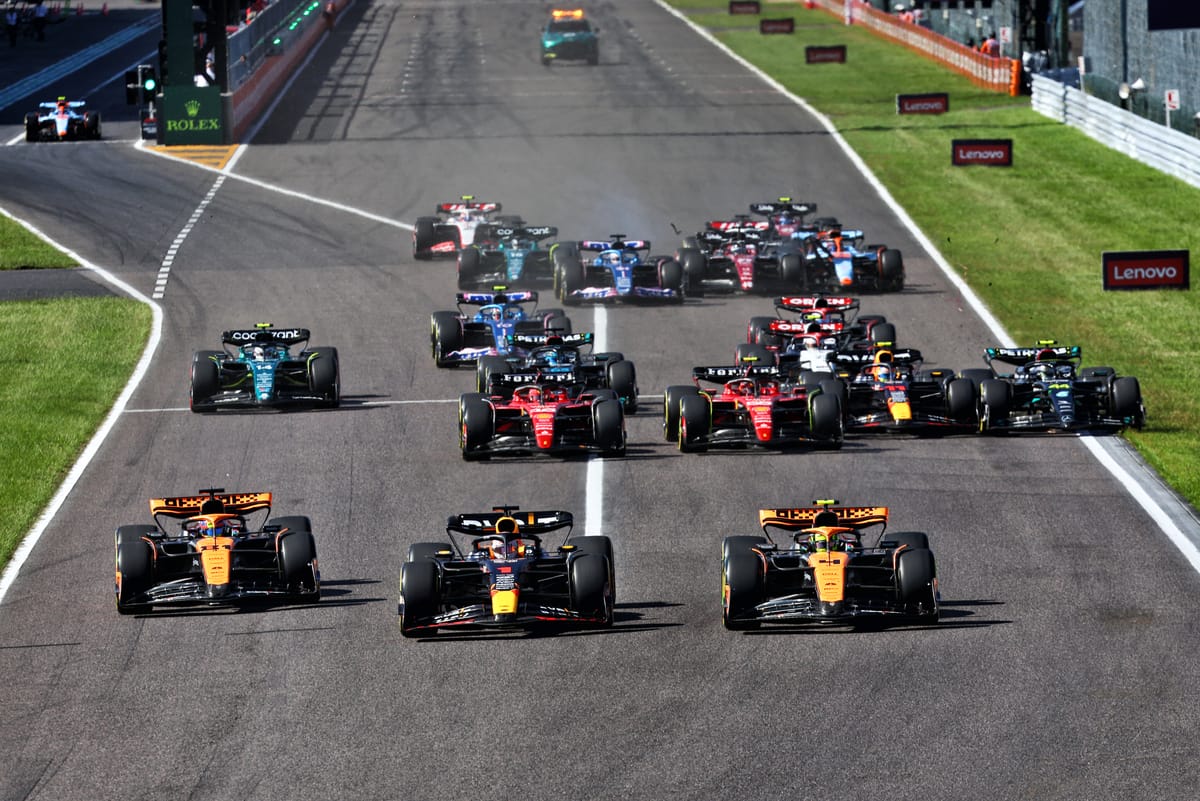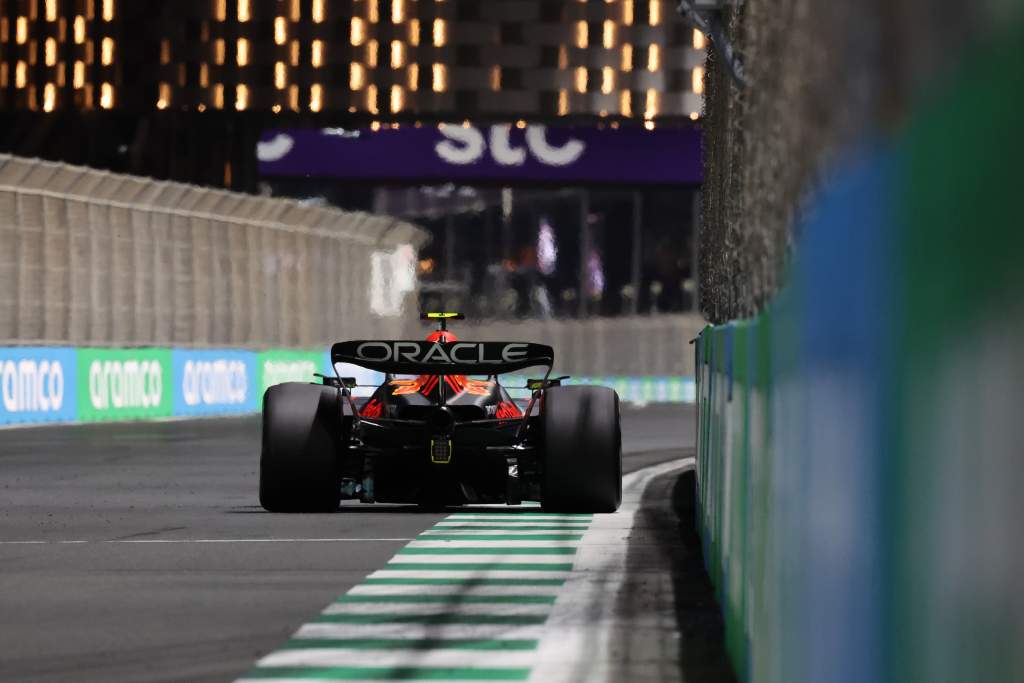Up Next

Even by Adrian Newey’s lofty standards, the Red Bull RB19 Formula 1 car was a stunning success.
The breaking of records as Max Verstappen waltzed to 19 grand prix wins in one season in the second year of the ‘ground effect’ regulations was not how most would have called it a year ago.
After Red Bull won all but five GPs in 2022, the natural assumption was that the second year of these tunnel-floored cars would lead to its advantage being reduced.
Well, pretty much everyone did make progress. It’s just that Red Bull made more.
Only a couple of teams had even begun to understand the fundamentals of what made the ’22 Red Bull dominant. That little detail is what was at the heart of the ’23 car’s increased advantage as it took the basic foundation that was so right – and added forever more downforce to it. The rightness of that concept back in ’22 was to do with Newey.
He feeds into the technical group including also technical director Pierre Wache and aero chief Enrico Balbo. But he will tell you he doesn’t ever direct that team of gifted people, would never say ‘we’re going this way, follow me’.
But he seems to have an intuitive understanding of the hierarchy of importance of performance factors, especially when a new set of regulations come into force and mix all those variables up. Historically, that is where he gets the jump on everyone else.
So when these regulations came in for 2022, his overview of how these underfloors needed to work in conjunction with the suspension will have been a guiding principle. Suspension was no longer just subservient to aerodynamics, but absolutely intrinsic to it.
To that end, he designed the RB18’s front and rear suspensions himself. It gave extremely tight platform control (with very little pitch or dive), allowing the car to run a softer rear suspension than the others - which, in combination with a much more sympathetic contouring of the floor, gave that always-strong, bounce-free downforce delivery.
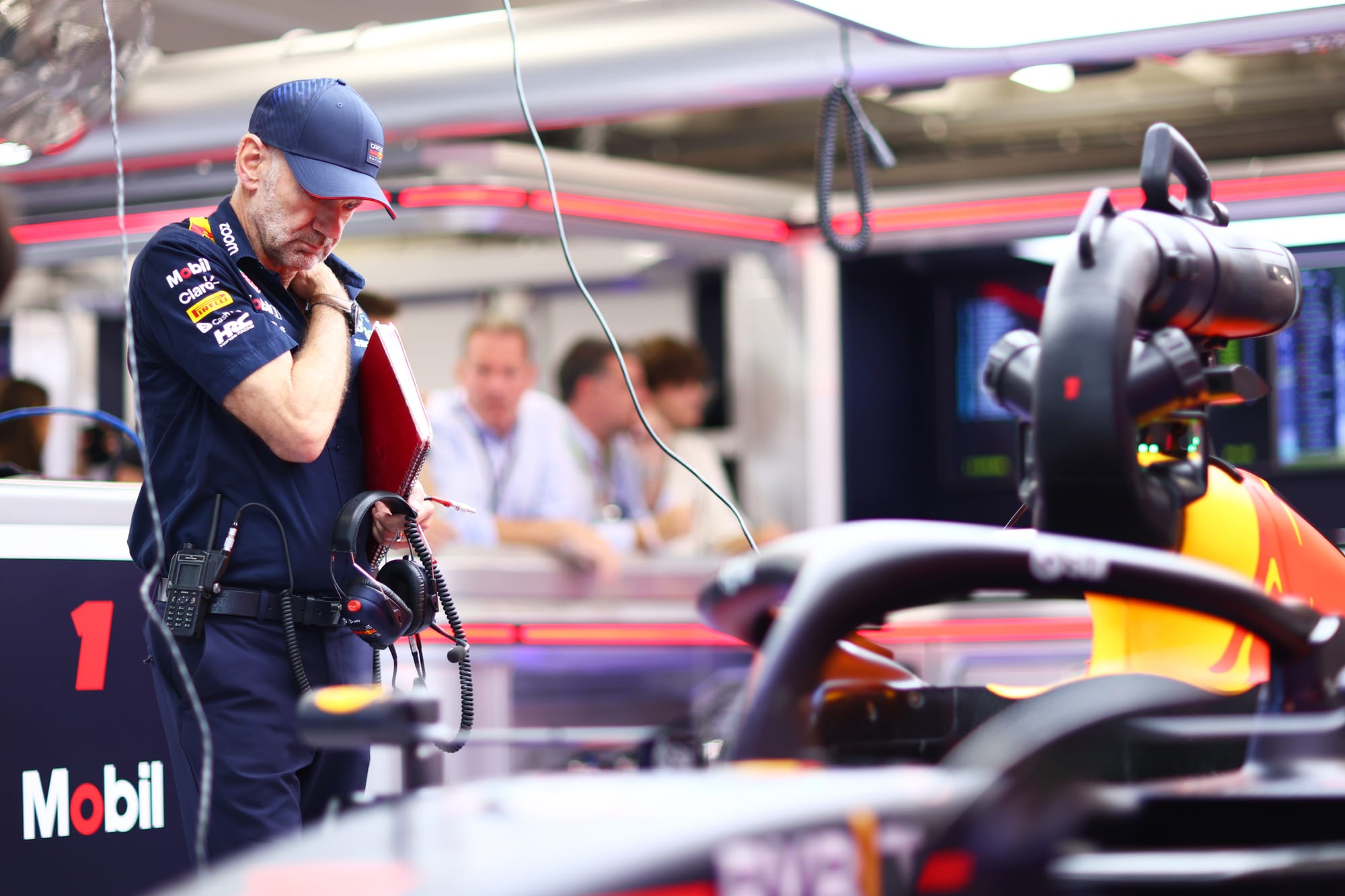
What distinguished the RB18 was how it could deliver good, consistent downforce at all ride heights, all conditions of yaw, pitch and roll, etc. – without ever being troubled by porpoising or bouncing. It wasn’t about its peak downforce (which was not remarkable), but the spread of useable downforce (which was).
Newey’s way of visualising multi-dimensional aspects of the total performance was written into the RB18’s very DNA. The RB19 piled the downforce onto that perfect platform. Hence why it was even further distant from the chasing pack.
When we caught up with the man himself near the end of the season, asked if this – his most statistically dominant car yet – gave him the most satisfaction.
“I don’t know, really,” Newey smiled. “It’s a bit shallow if you just base it on results. I’ve seen many different eras.
"Go back to ‘90s with the active car, really pushing a new technology to its ultimate, especially the ’93 car. ’92 the first time I was involved in a championship-winning car [the Williams FW14B]. Then the end of the ‘90s, grooved tyres, my move to McLaren, it was quite satisfying to show I could be involved with a different team and still get results.
"The first Red Bull championship in 2010, having come so close in ’09, was good. In ’10 we probably had as big a performance advantage as we’ve had this year but didn’t have the reliability.
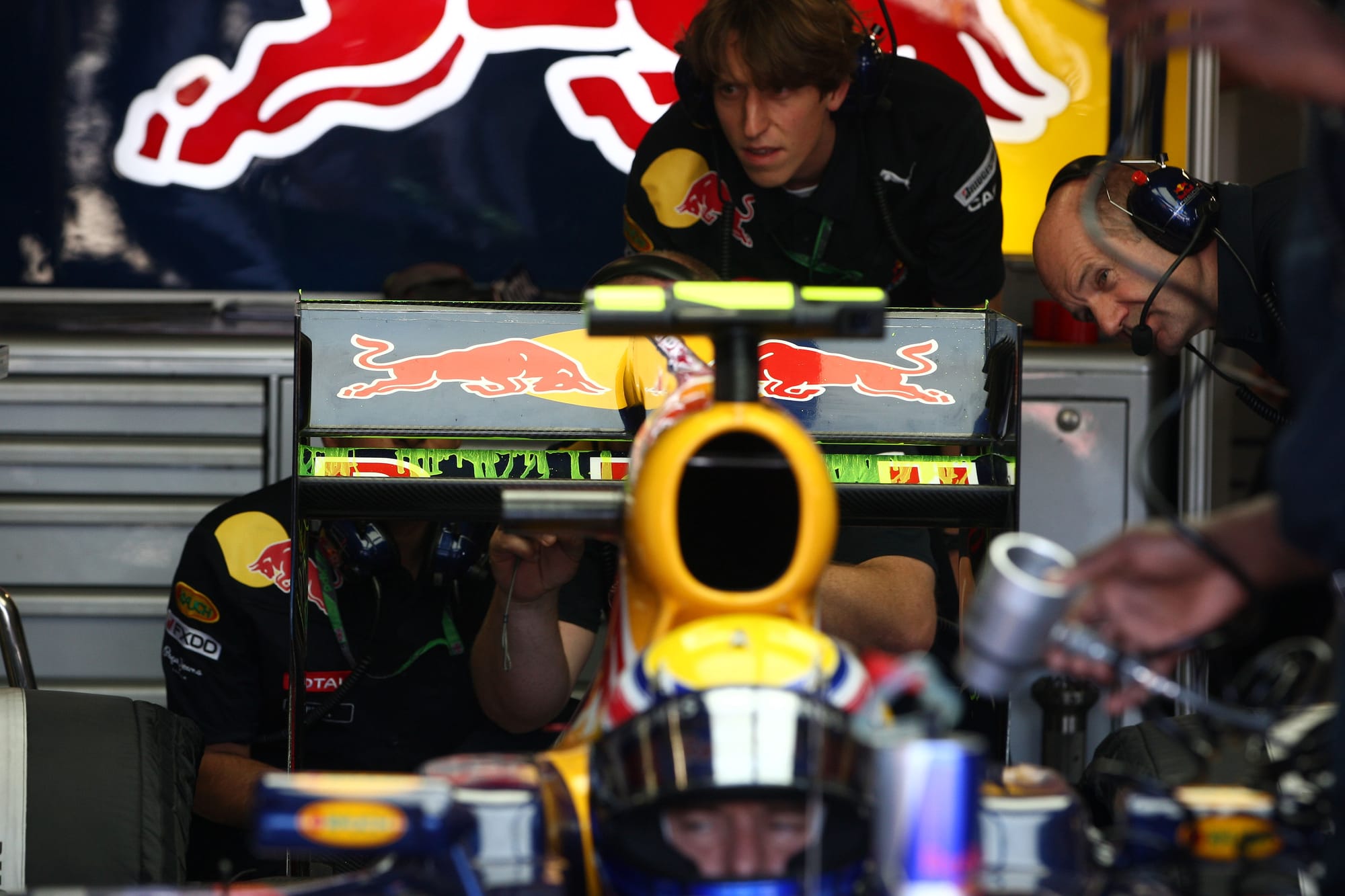
“The biggest thing is the change in technology and regulations. The ‘90s, at the time those rules seemed very restrictive but were incredibly open compared to now. But we didn’t have the size of team.
"Much more importantly we didn’t have the simulation tools to give us the level of understanding we have now.
"The windtunnels themselves haven’t changed all that much. Yes, we use PIV [Particle Image Velocimetry] more than we did then. In the early ‘90s CFD was still very, very early so we were designing the car on flo-viz, wool tufts and instinct and trying to understand from that what you thought would be a good direction.
“If you look at the level of complication of the aerodynamics we have now, perhaps even more so before the rule change, all the little details we have, without CFD we wouldn’t have that because you just wouldn’t have the understanding of the flow physics. The windtunnel is still the arbitrator but CFD is where you get the ideas.
"Similarly, with the mechanical design of the car. In those days computer-aided draughting and computer-aided machining were only just coming in. So shapes were simpler. Simulation tools for the vehicle dynamics and race engineering.
"Again very, very basic, mainly instinct. We had data recorders but they don’t tell you… they tell you what the car is doing but that doesn’t give you the insight so you know what to do next.
“For me that’s the biggest change. I don’t think it’s the size of the team or the materials, it’s really the computer age and the amount of processing and simulation you have. It allows you to go in much more detail.
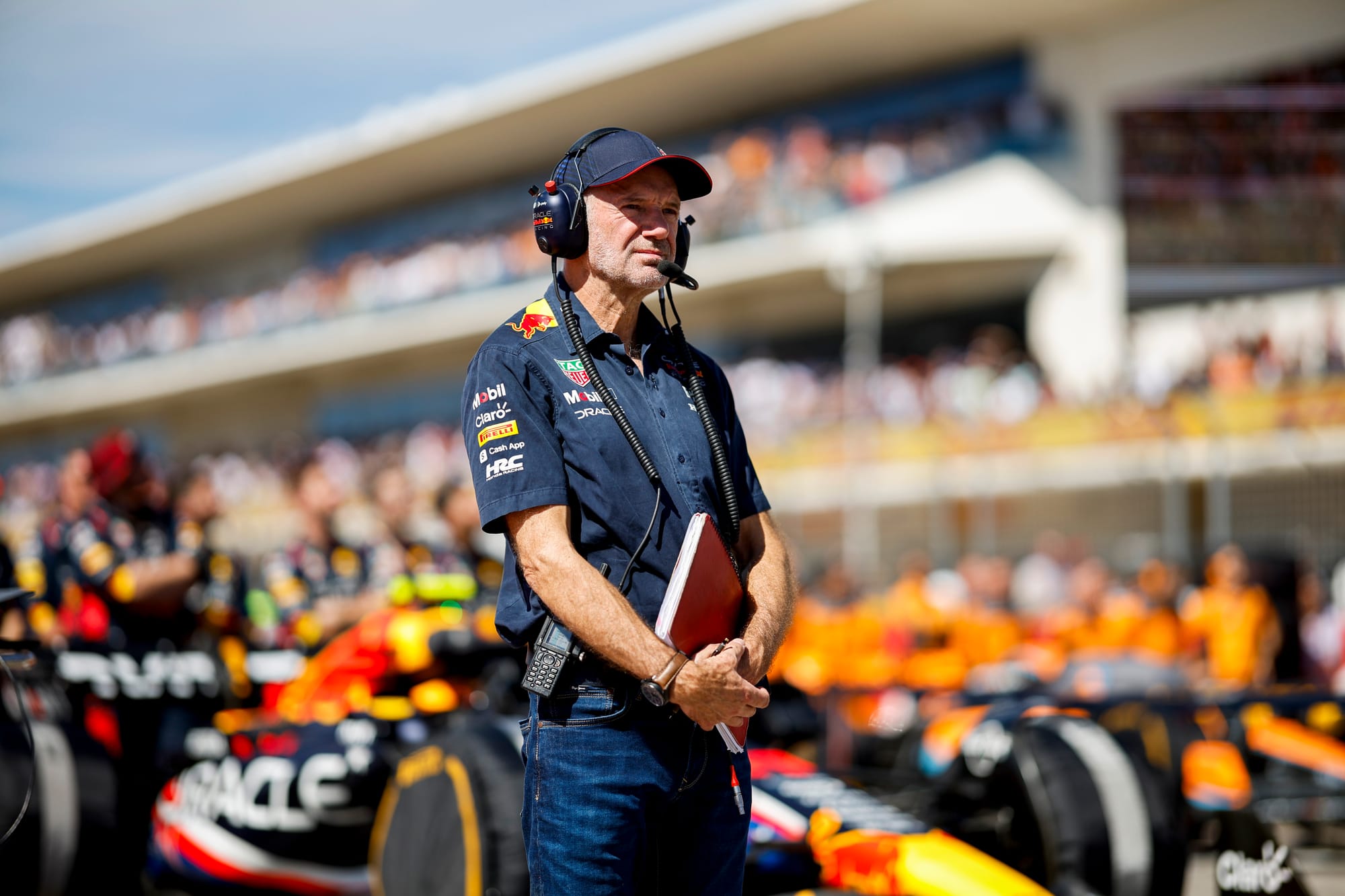
"It’s that which drove the numbers for much bigger teams. If you take Williams in the ‘90s we had about 25 engineers. We have many multiples of that here now, but if you took all the guys we have now and took them back to the ‘90s, they wouldn’t have enough to do. You’d be ridiculously over-staffed.”
That’s where he goes from just one simple question. You just let him run - and learn along the way. That’s probably much how it is inside Red Bull.
But anyway, coming back to the enhanced importance of suspension in a car generating its underbody downforce from running as close to the ground as possible, as other teams seemed not to have considered it as deeply, was he surprised that the team’s advantage increased?
“I have been surprised. It’s not what we expected at all, the level of advantage we’ve had at most circuits this year compared to the opposition," Newey adds.
"Over the years, quite often when you come up with a completely new concept, the first year can be quite good… There’s obviously been a few cars inspired by our car of last year but I don’t know, not having any detailed knowledge of them, I can’t really comment.
“The thing about bouncing is it’s a multi-dimensional problem. So it’s obviously the aerodynamic shape of the car itself, it’s then coupled with suspension and possibly bodywork stiffness and all sorts of things, as people have gradually found out over the last year and a half.
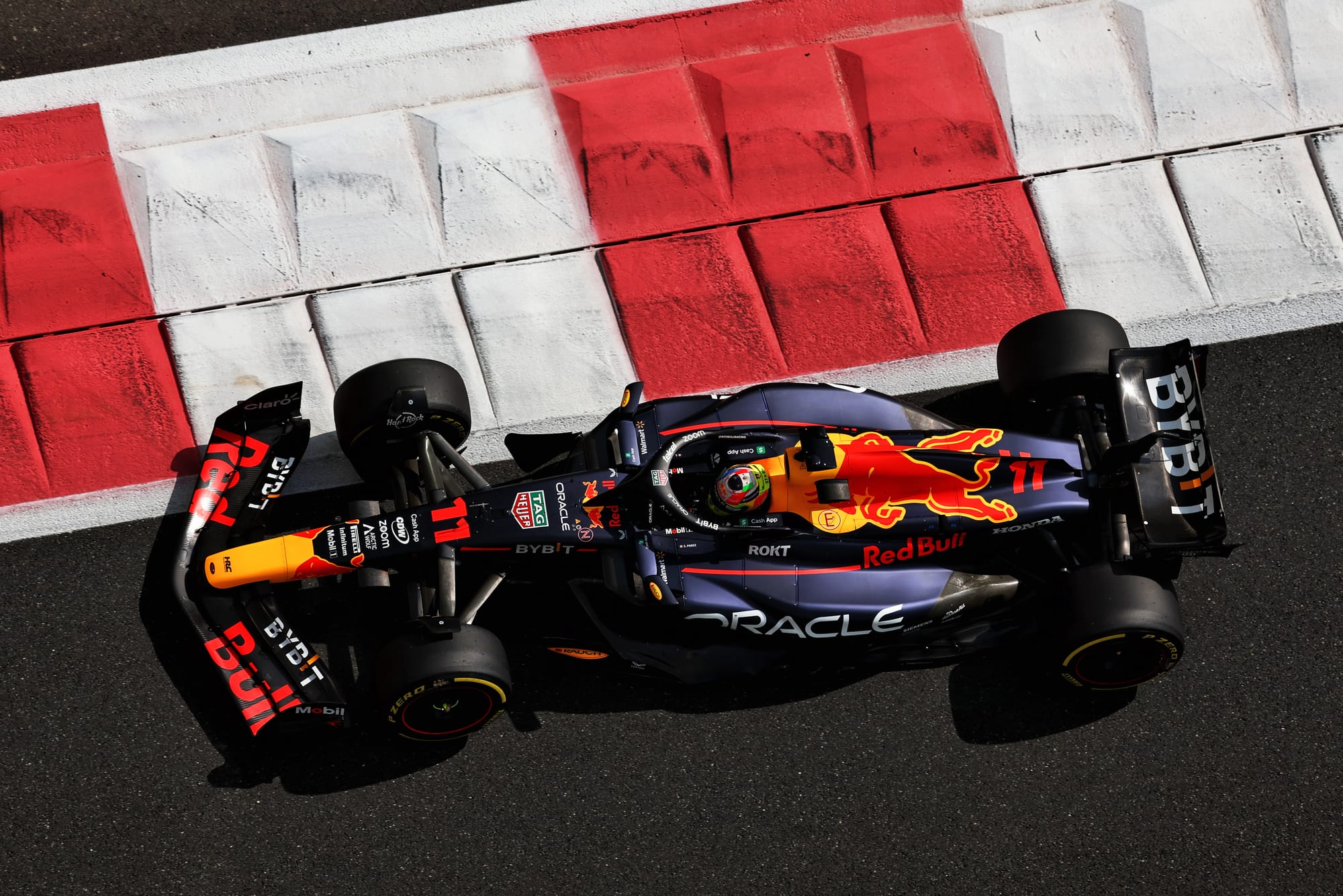
"So you have to look at it holistically. You can’t just focus on one single bit.
"I remember when I was at Fittipaldi [in 1980-82] Harvey Postlethwaite had a thing about rising rate rubber suspension and he decided to save a bit of weight on the car he’d try to throw the springs and dampers away and just sit the car on a set of bump rubbers.
"It was the first time I’d ever been to a racetrack and in the old pits at Silverstone Keke Rosberg came past and the car was bouncing so heavily you could see air beneath the front tyres. He came in after one lap, eyes wide and said 'that doesn’t work'!
"That was the first time for me I realised bouncing wasn’t purely an aerodynamic problem.”
There’s an interesting bit of background revealed when we ask how big a challenge it was retaining the aerodynamic performance of the car around the 2023 regulation tweak of a 15mm increase in rear floor (and 10mm diffuser height).
“Ah, the interesting thing about that was when the change was announced last year we were discussing it internally. Some of our guys were saying, ‘no, we’ve got to really fight this’.
"But I took the view that actually in the high-speed corners last year we were probably behind Ferrari. Our car was getting itself into problems in the very high speed so actually that reg change might suit us so we didn’t really push against it too much.
"It turned out it seems it has suited us.”
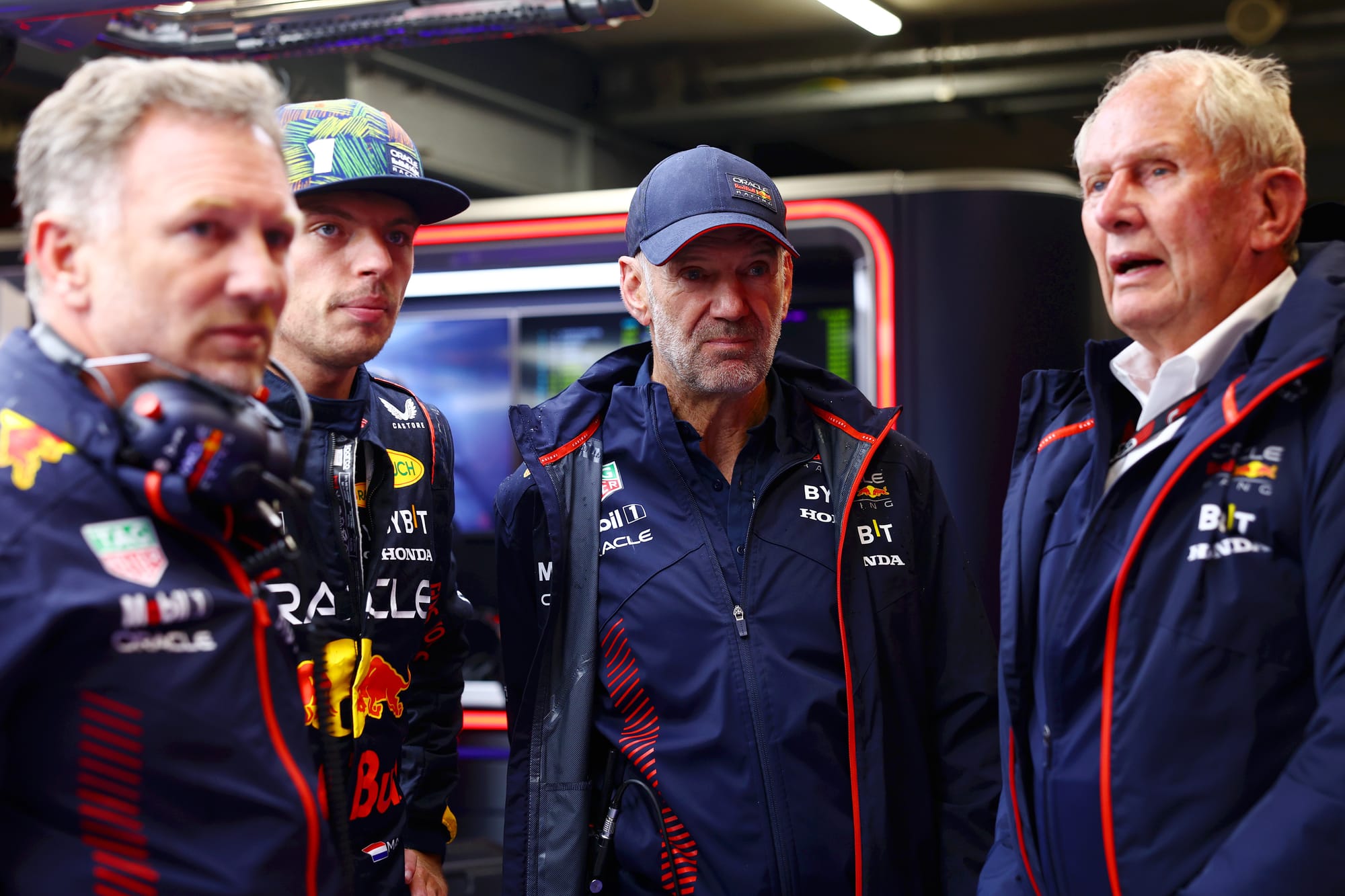
Although the RB19 wasn’t visually very different from its predecessor, the detail changes were crucial.
One of the most important of these - generally missed - was the section change in the chassis shape. It had a much-enhanced 'V' shape. This opened up volume in areas that were especially interesting in a tunnelled ground effect car.
There was a greater volume to feed the tunnels, there was greater depth to the sidepods, which would allow a more powerful vortex to form in the undercut. But they weren’t the impetus, merely value-added features.
“It’s evolutionary,” he says. “We had a 'V' shape on last year’s car but were a bit more aggressive in the nose area on this year’s. It’s really just management of the front wheel wake. As the cars have become better understood the downforce has gone up and quite often that means a bigger front wing demand.
"So then you have to put a bit more effort into managing how you use the front wing.”
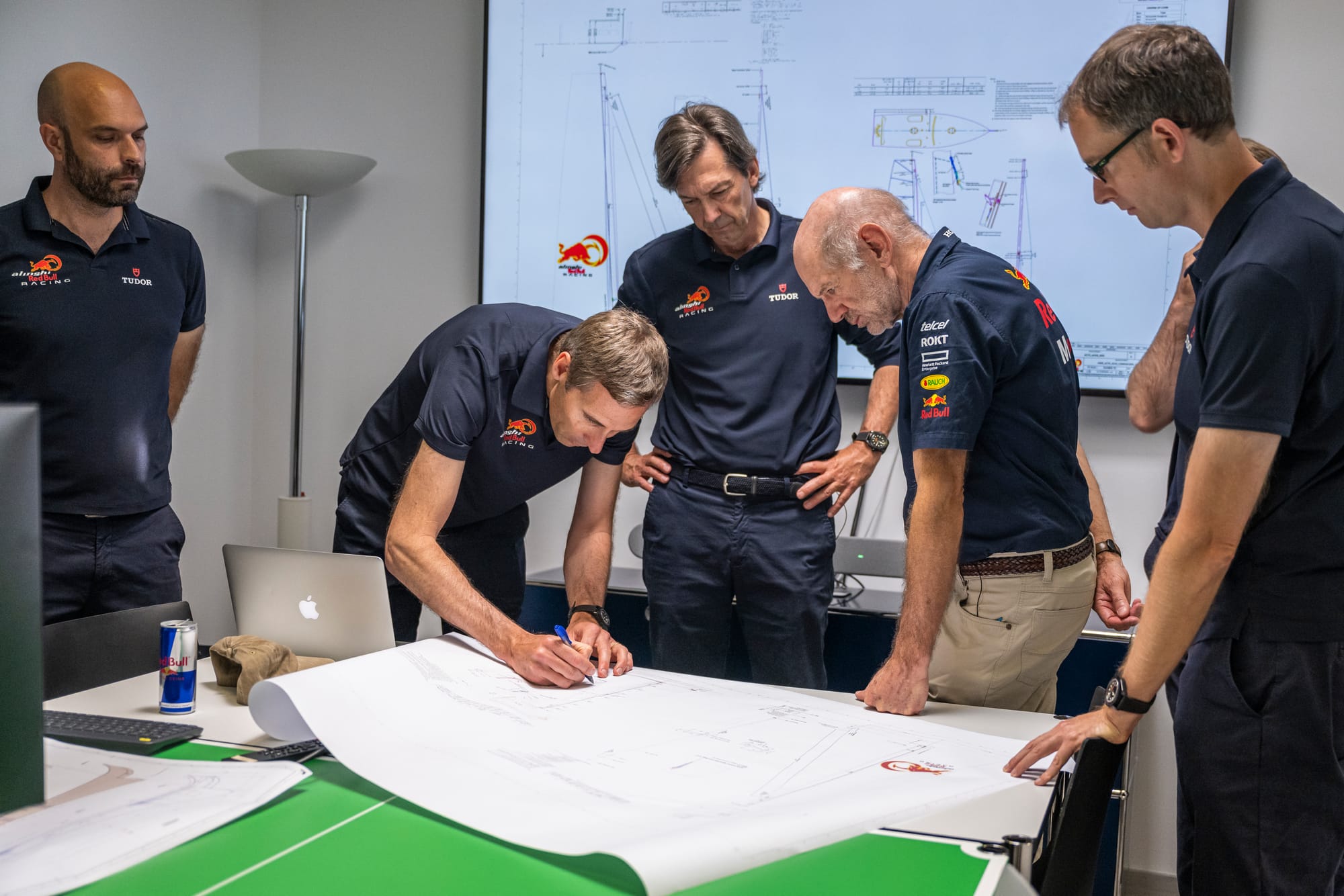
The car’s DRS effectiveness was enhanced, with a double kick in the upward ramp of the diffuser probably being a key part of this. With the very aggressive beam wing continuing that ramp as it directs the airflow to the underside of the main wing, when DRS was deployed a greater stall looked to have been achieved.
This was always much more evident on low-wing tracks, when the pull of the wing itself on the beam wing-diffuser-floor combination would have been less.
“It’s something we could have done last year had we devoted energy to it,” says Newey. “It wasn’t a weakness before but if you can increase the effect you take it.
"It’s a learning process. You critique what you have, look at how you can improve it and that’s been the evolutionary aspect of this year’s car.
"You can look at it two ways. If you qualify on pole and disappear DRS isn’t that important. But you have in qualifying so it’s useful there and in the race if you’re not at the front it’s also very important.”
The only weakness of the car, if it can be called that, is it was occasionally compromised by not being able to generate front tyre temperatures quickly enough to be ready for Turn 1 of a qualifying lap. Verstappen was ‘only’ on pole 13 times, but won 19 grands prix…
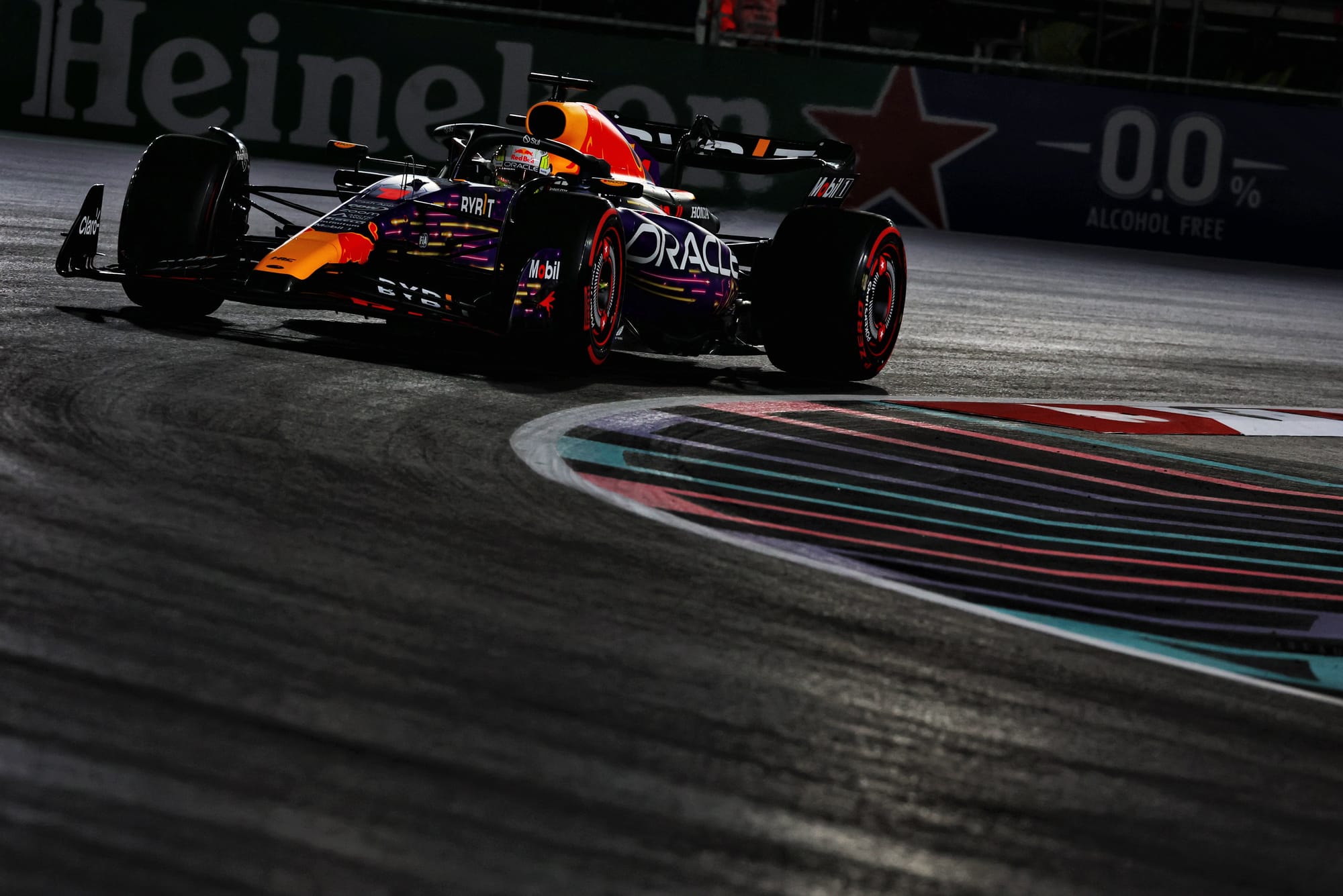
“Yes, that’s just the way we’ve developed the car. We’ve tried to prioritise race performance more than qualifying," Newey says.
"We made that decision back in ’21 when we were designing the car, to try to prioritise the race performance over one-lap performance.
"It was a deliberate choice and we felt that if the overtaking was going to become easier then that presumably meant qualifying performance would be slightly lower priority than in the past and it seems to have worked out.”
Given the blockbusting success of the Red Bulls in the first two years of these regulations, it’s not surprising that Newey quite likes them.
“To be totally honest when I first saw these regs in 2020 I was thinking this looks way too restrictive and quite dull. A lot of teams thought the same.
"We managed to apply some pressure to get a bit of a relaxation on them. Then once you get into them you realise there’s more flexibility in them when you first look at all the prescriptive boxes, gradients, rate changes etc.
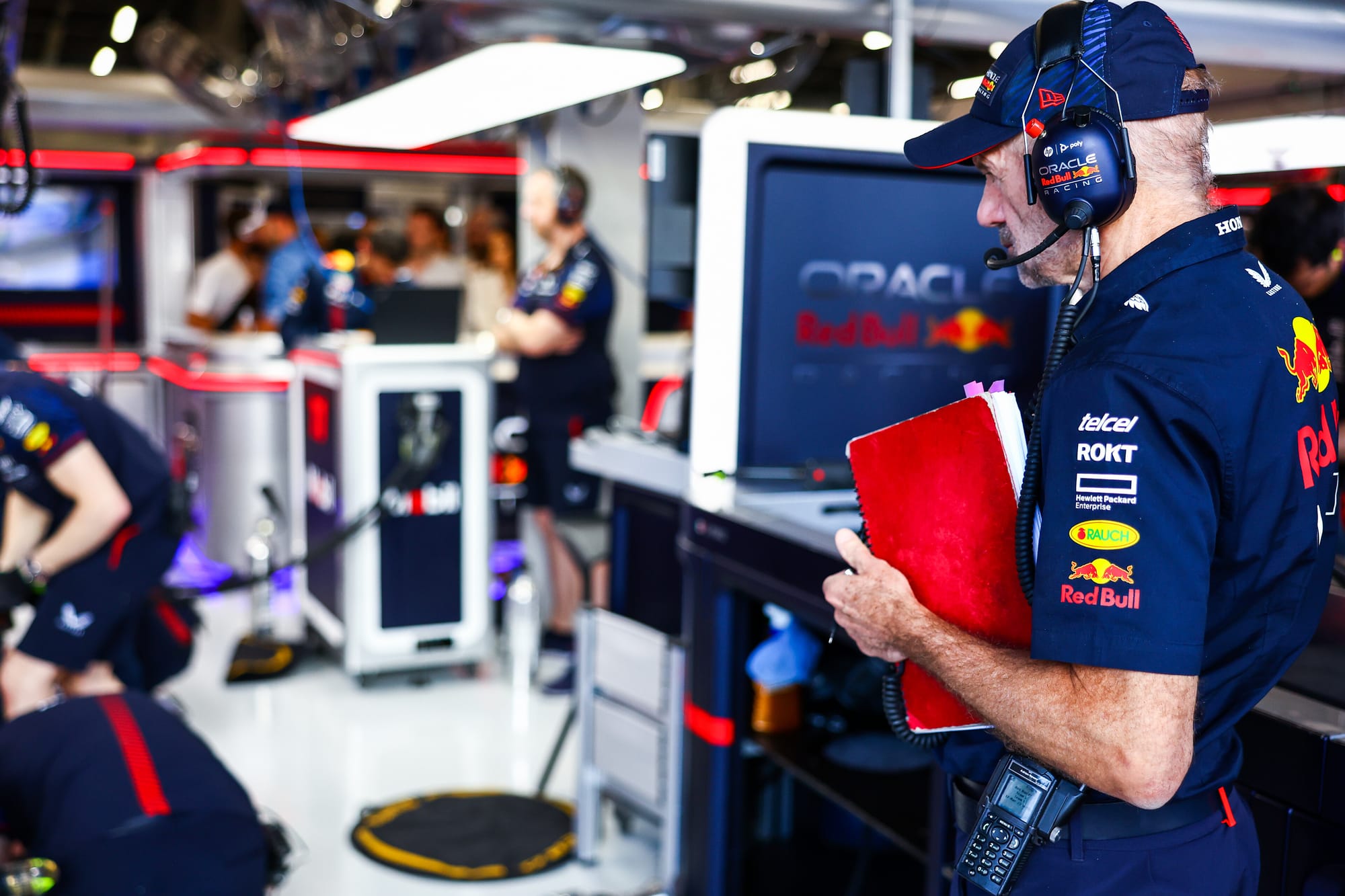
"Once you get into the detail there’s actually a reasonable amount of freedom.”
It’s in that detail and freedom that the blockbusting success resides. So long as you have a mind like Newey’s.


